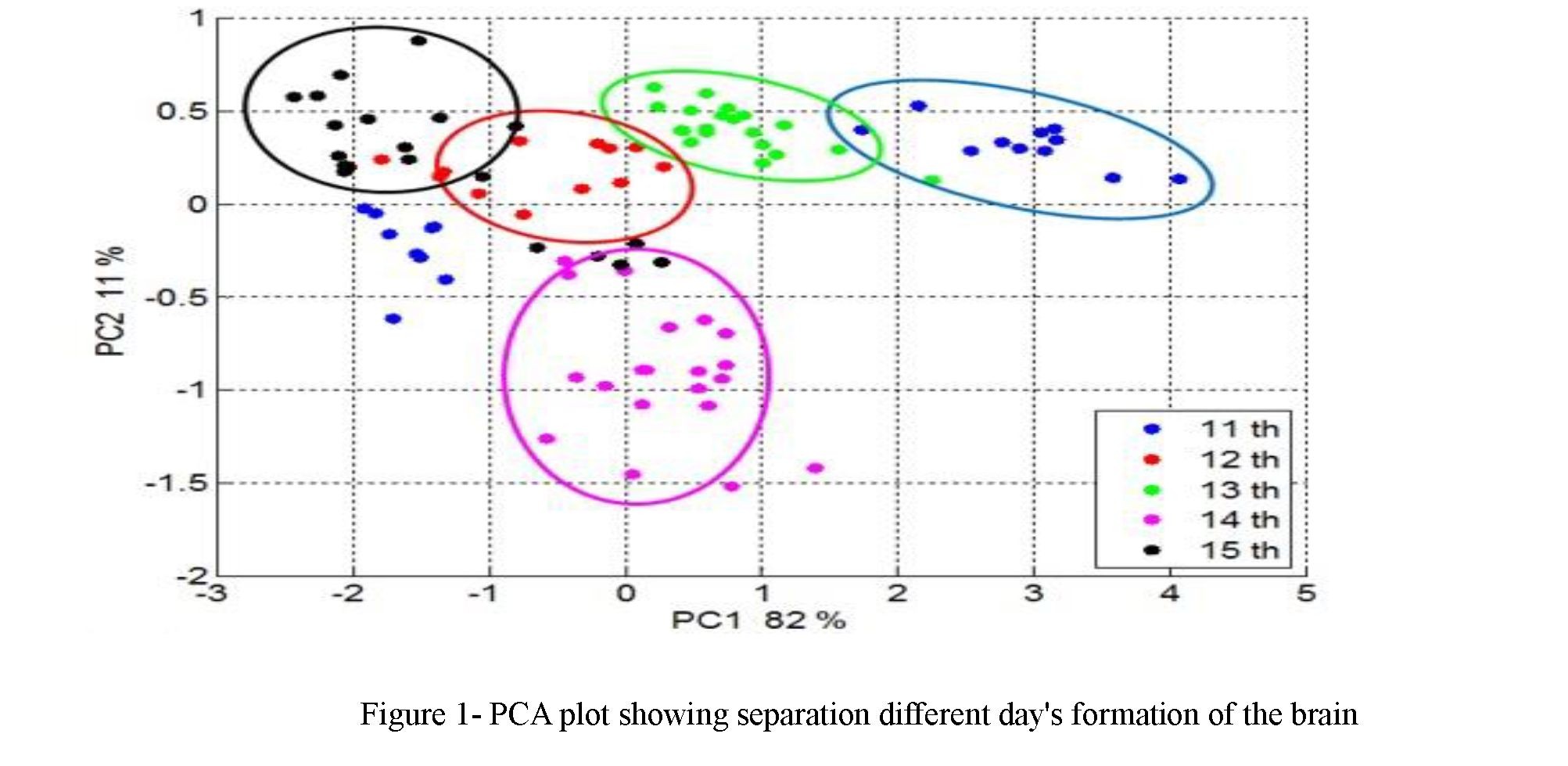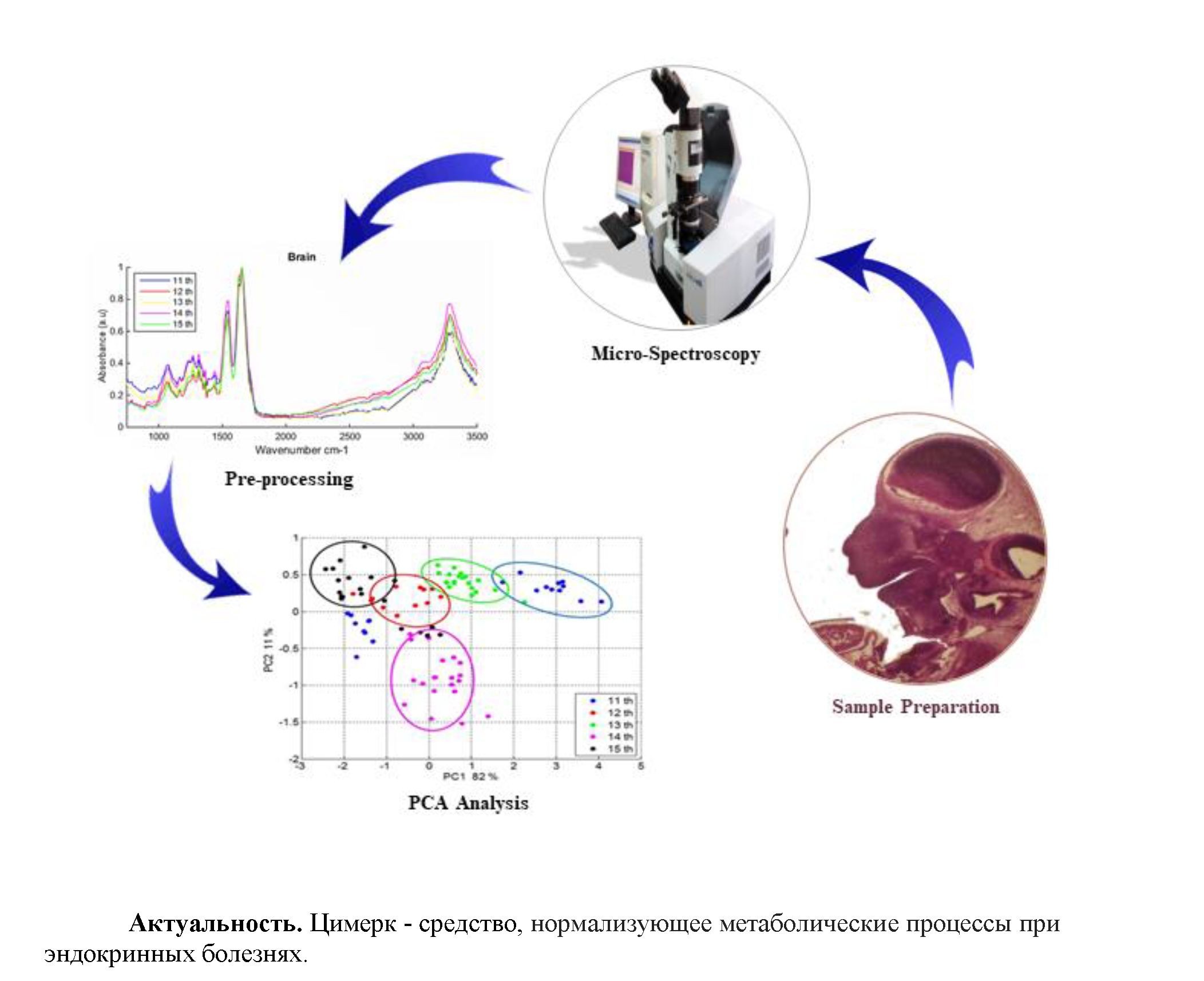Summary
The use of FTIR in the analysis of biological samples has received much attention for many years. Teratology is the study of gross structural malformations that are observable before or after birth and can be caused by variable reason .In this study, we observed biochemical changes in the mouse brain during the pregnancy so the normal pattern is obtained by which tissue changes can be examined (1, 2).
Keywords: FTIR, fetus, teratology, embryology, mouse
Purpose of study: In this study, we have examined the potential of FTIR biospectroscopy for the teratology toxicity tests with the study of spectroscopic pattern changes classification possibility of the brain during the mouse pregnancy.
Material and methods: Mouse embryos were used in 11 to 15 embryonic days. The embryos were fixed, paraffin blocks were prepared, and then spectroscopy was performed using FTIR. The data were analyzed with Principal component analysis (PCA) after preprocessing process (3).
Results and discussion: PCA results in figure 1 showed that the spectroscopic pattern of mouse brain tissue alterations can be discriminated during the 11th to 15th days of pregnancy.
These results indicate that a normal pattern of brain tissue can be obtained by FTIR. Such finding might be a very useful tool to study the biological development of mouse brain, and to test the event of biochemical changes in the brain during the embryonic period exposure to teratogens, as a novel potential test protocol.
 Conclusion: FTIR biospectroscopy is a simple and suitable tool for examination of biological samples and tissues development.
Conclusion: FTIR biospectroscopy is a simple and suitable tool for examination of biological samples and tissues development.
84

References:
- Lopes CdCA, Limirio PHJO, Novais VR, Dechichi P. Fourier transform infrared spectroscopy (FTIR) application chemical characterization of enamel, dentin and bone. Applied Spectroscopy Reviews. 2018;53(9):747-69.
- Calado AM, dos Anjos Pires M. An Overview of teratology. Teratogenicity Testing. 2018:3-32.
- Shakya BR, Shrestha P, Teppo H-R, Rieppo L. The use of Fourier Transform Infrared (FTIR) spectroscopy in skin cancer research: a systematic review. Applied Spectroscopy Reviews. 2021;56(5):347-79.